
The tiger is the largest living cat species and a member of the genus Panthera. It has a powerful, muscular body with a large head and paws, a long tail, and distinctive black, mostly vertical stripes on orange fur. It was first scientifically described in 1758 and is traditionally classified into eight subspecies though some recognize only two subspecies, mainland Asian tigers and island tigers of the Sunda Islands.
The term "big cat" is typically used to refer to any of the five living members of the genus Panthera, namely the tiger, lion, jaguar, leopard, and snow leopard, as well as the non-pantherine cheetah and cougar.

The Bengal tiger is a population of the Panthera tigris tigris subspecies and the nominate tiger subspecies. It ranks among the biggest wild cats alive today. It is considered to belong to the world's charismatic megafauna.

The Siberian tiger or Amur tiger is a population of the tiger subspecies Panthera tigris tigris native to the Russian Far East, Northeast China and possibly North Korea. It once ranged throughout the Korean Peninsula, but currently inhabits mainly the Sikhote-Alin mountain region in southwest Primorye Province in the Russian Far East. In 2005, there were 331–393 adult and subadult Siberian tigers in this region, with a breeding adult population of about 250 individuals. The population had been stable for more than a decade because of intensive conservation efforts, but partial surveys conducted after 2005 indicate that the Russian tiger population was declining. An initial census held in 2015 indicated that the Siberian tiger population had increased to 480–540 individuals in the Russian Far East, including 100 cubs. This was followed up by a more detailed census which revealed there was a total population of 562 wild Siberian tigers in Russia. As of 2014, about 35 individuals were estimated to range in the international border area between Russia and China.

The Sumatran tiger is a population of Panthera tigris sondaica on the Indonesian island of Sumatra. It is the only surviving tiger population in the Sunda Islands, where the Bali and Javan tigers are extinct.

The Caspian tiger was a Panthera tigris tigris population native to eastern Turkey, northern Iran, Mesopotamia, the Caucasus around the Caspian Sea, Central Asia to northern Afghanistan and the Xinjiang region in western China. Until the Middle Ages, it was also present in southern Russia. It inhabited sparse forests and riverine corridors in this region until the 1970s. This population was regarded as a distinct subspecies and assessed as extinct in 2003.

The South China tiger is a population of the Panthera tigris tigris subspecies that is native to southern China. The population mainly inhabited the Fujian, Guangdong, Hunan and Jiangxi provinces. It has been listed as Critically Endangered on the China's Red List of Vertebrates and is possibly extinct in the wild since no wild individual has been recorded since the late 1980s. In the late 1990s, continued survival was considered unlikely because of low prey density, widespread habitat degradation and fragmentation, and other environmental issues in China. In the fur trade, it used to be called Amoy tiger.

The Javan tiger was a Panthera tigris sondaica population native to the Indonesian island of Java. It was one of the three tiger populations that colonized the Sunda Islands during the last glacial period 110,000–12,000 years ago. It used to inhabit most of Java, but its natural habitat decreased continuously due to conversion for agricultural land use and infrastructure. By 1940, it had retreated to remote montane and forested areas. Since no evidence of a Javan tiger was found during several studies in the 1980s and 1990s, it was assessed as being extinct in 2008.

The Bali tiger was a Panthera tigris sondaica population on the Indonesian island of Bali which has been extinct since the 1950s.
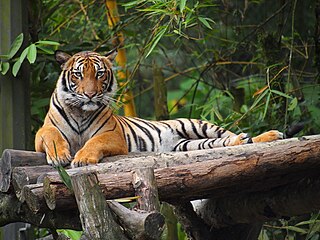
The Malayan tiger is a tiger from a specific population of the Panthera tigris tigris subspecies that is native to Peninsular Malaysia. This population inhabits the southern and central parts of the Malay Peninsula, and has been classified as critically endangered. As of April 2014, the population was estimated at 80–120 mature individuals, with a continuing downward trend.
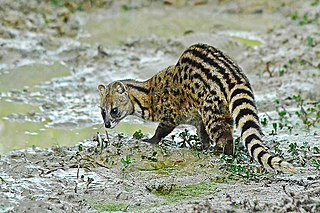
The small Indian civet is a civet native to South and Southeast Asia. It is listed as Least Concern on the IUCN Red List because of its widespread distribution, widespread habitat use and healthy populations living in agricultural and secondary landscapes of many range states.

Alan Robert Rabinowitz was an American zoologist who served as the president, CEO, and chief scientist at Panthera Corporation, a nonprofit conservation organization devoted to protecting the world's 40 wild cat species. Called the "Indiana Jones of Wildlife Protection" by Time, he studied jaguars, clouded leopards, Asiatic leopards, tigers, Sumatran rhinos, bears, leopard cats, raccoons, cervidae, and civets.
The tiger is an iconic species. Tiger conservation attempts to prevent the animal from becoming extinct and preserving its natural habitat. This is one of the main objectives of the international animal conservation community. The Convention on International Trade in Endangered Species of Wild Fauna and Flora (CITES) has played a crucial role in improving international efforts for tiger conservation.
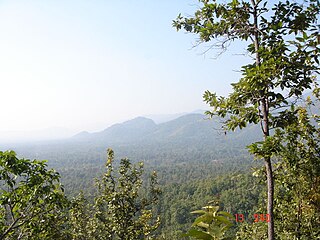
The Huai Kha Khaeng Wildlife Sanctuary is in Uthai Thani and Tak Provinces, Thailand. The park was established in 1974, and is part of the largest intact seasonal tropical forest complex in Mainland Southeast Asia. It, coupled with the Thungyai Naresuan Wildlife Sanctuary was declared a World Heritage Site by the United Nations in 1991. Together, the two sanctuaries occupy 622,200 hectares. As of 2014 it still contained viable populations of large mammals, including gibbons, bears, elephants and Indochinese tigers, although like all other sites in mainland Southeast Asia, some species have disappeared or have experienced severe declines.
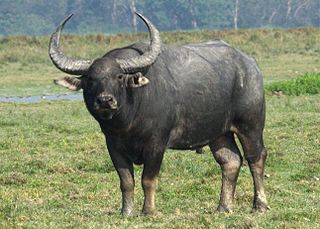
The wild water buffalo, also called Asian buffalo, Asiatic buffalo and wild buffalo, is a large bovine native to the Indian subcontinent and Southeast Asia. It has been listed as Endangered in the IUCN Red List since 1986, as the remaining population totals less than 4,000. A population decline of at least 50% over the last three generations is projected to continue. The global population has been estimated at 3,400 individuals, of which 3,100 (91%) live in India, mostly in Assam. The wild water buffalo is the most likely ancestor of the domestic water buffalo.

Germain's langur is an Old World monkey native to Thailand, Myanmar, Cambodia, Laos and Vietnam. The monkey was previously included in Trachypithecus cristatus and Trachypithecus villosus.
Htamanthi Wildlife Sanctuary is a 2,150.73 km2 (830.40 sq mi) large protected area in northern Myanmar. It was established in 1974 in the Sagaing Region.

Panthera Corporation, or Panthera, is a charitable organization devoted to preserving wild cats and their ecosystems around the globe. Founded in 2006, Panthera is devoted to the conservation of the world’s 40 species of wild cats and the vast ecosystems they inhabit. Their team of biologists, data scientists, law enforcement experts and wild cat advocates studies and protects the seven species of big cats: cheetahs, jaguars, leopards, lions, pumas, snow leopards and tigers. Panthera also creates targeted conservation strategies for the world’s most threatened and overlooked small cats, such as fishing cats, ocelots and Andean cats. The organization has offices in New York City and Europe, as well as offices in Mesoamerica, South America, Africa and Asia.
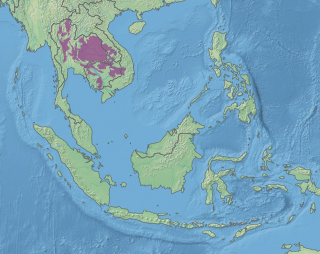
The Central Indochina dry forests are a large tropical and subtropical dry broadleaf forests ecoregion in Southeast Asia.

The Indochinese leopard is a leopard subspecies native to mainland Southeast Asia and southern China. In Indochina, leopards are rare outside protected areas and threatened by habitat loss due to deforestation as well as poaching for the illegal wildlife trade. In 2016, the population was previously thought to comprise 973–2,503 mature individuals, with only 409–1,051 breeding adults. The historical range had decreased by more than 90%. However, as of 2019, it is estimated that there are 77-766 mature Indochinese leopards and that their numbers are decreasing.




















